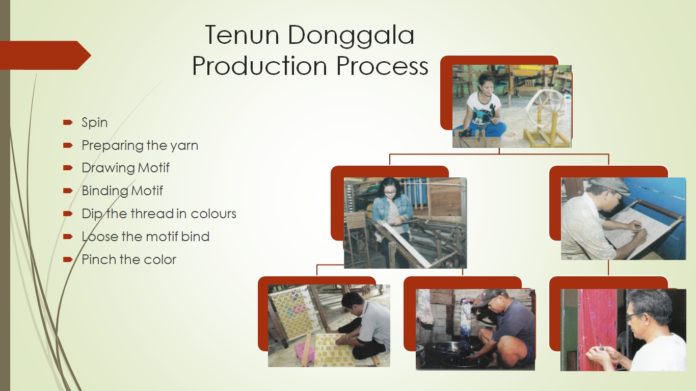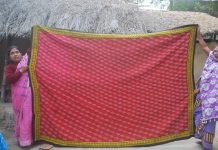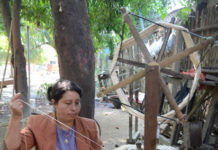Central Sulawesi province is one of the Indonesian famous for its woven fabric, named donggala. It is often also called the sarong donggala. Locals refer to it as buya sabe. It comes from Donggala, which is a province of Central Sulawesi. Donggala woven fabric is usually made with silk thread. It is made by 50-60 years old and 12-20 year old girls using a loom machines, which are made of wood sized 2 x 1m. The motifs of the woven fabric are palekat garusu, buya bomba, buya sabe, bomba combination, sabe, floral rose, carnation, flower subi, flower combination subi and bomba, and buya subi kumbaja.

Buya bomba motive is the most difficult process. Donggala sarong should only be worn at weddings, circumcisions, and traditional ceremonies. Certain motifs, such as palaekat, are restricted to the king or nobility. Donggala is popular and used in various official occasions. To preserve it, Donggala regency government already has a patent on the woven fabric. Currently. Donggala fabric increasingly popular since there are regulations requiring local governments to use it on every working day ahead of the weekend.
Donggala weaving makes a formal or semi-formal dress. Some are already made with bright colors, such as pink and yellow, to target a wider audience. The centre of Donggala weaving is the village of Limboro, Towale, District Banawa within 40 kilometers of the city of Palu. Donggala can also be found in in the village Watusampu, Ulujadi subdistrict, Palu. Donggala fabric prices vary depending on the difficulty of manufacture. Although the length can reach 4 metres, original donggala textile only has a width of 60cm due to the limited ability of the tool. This is what causes them to require two strands woven to create the perfect sarong.
Weaving is normally conducted by women when their husbands have left for work. The process is similar to other ikat weaving.
The flagship product is the buya subi derived from Kaili community in Central Sulawesi. Subi word associated with the word sungkit in Indonesia. It combines gold and silver threads. The yarns are inserted with the result resembles embroidery. There are two kinds of buya subi namely buya subi sabe, buya subi with embossed silk threads of different colors like red silk thread, yellow, purple, blue, etc.; and buya subi kumbaja, buya subi embossed with gold or silver thread.
In South Sulawesi, donggala weavings can be found in the National Craft Council of Indonesia (South Sulawesi), SMESCO UKM Gallery and in Jakarta at SME Tower Jl. Jend. Gatot Subroto.
Gallery & Store Address:
National Craft Council of Indonesia
Central Sulawesi Province, Galeri Dekranasda
Jl. Tanjung Api no. 4, Kota Palu
Central Sulawesi, Indonesia
SMESCO UKM Gallery
Paviliun Sulawesi Tengah (Central Sulawesi)
SME Tower Jl. Jend. Gatot Subroto kav. 94, Kota Jakarta Selatan
Daerah Khusus Ibukota Jakarta, Indonesia
Sources
Maraji News vol. Agustus. Dekranasda Sulteng. 2015
Indonesian National Encyclopedia, 1997.





